Managing orders for your online store is honestly a pain. I’ve been there – orders pouring in from your website, Amazon, Facebook, and you’re scrambling to keep up. One minute you’re celebrating sales, the next you’re panicking because you shipped the wrong item or told a customer something was in stock when it wasn’t.
This is exactly why you need an ecommerce order management system. It’s basically software that automatically handles all the boring stuff – tracking orders, updating inventory, and sending customer emails. Pretty much everything that eats up your day.
However, picking the wrong order management system is worse than having no system at all. Trust me, I’ve seen businesses waste thousands on the wrong ecommerce OMS that doesn’t fit their needs.
The right best ecommerce order management system changes everything: less stress, fewer mistakes, happier customers.
We’ll walk you through choosing the perfect OMS ecommerce solution without all the confusing tech talk.
What is an Ecommerce Order Management Systems?
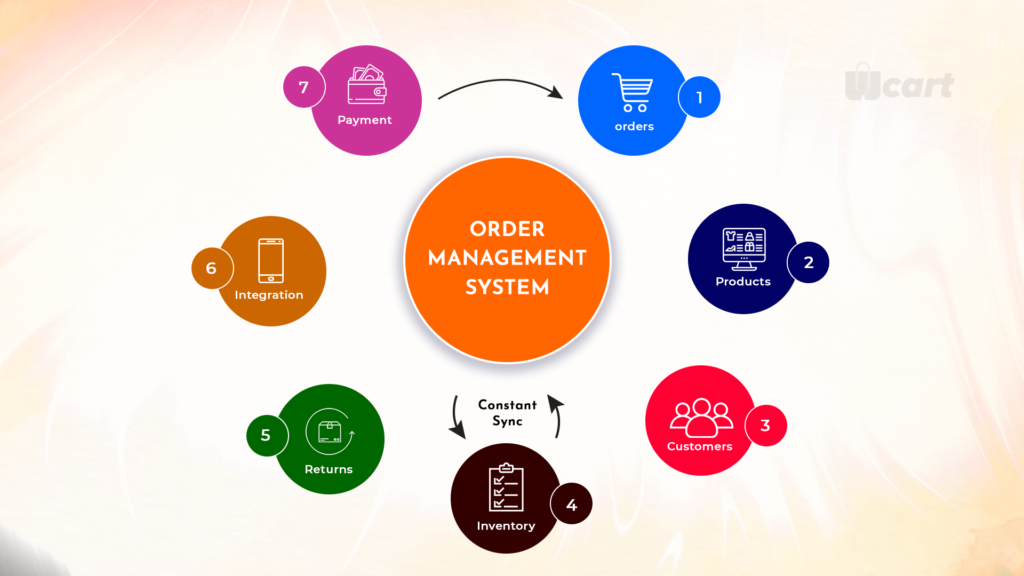
An Ecommerce Order Management Systems is a software solution designed to streamline and automate the order fulfillment process. It acts as a centralized platform that integrates various aspects of order management, including inventory, shipping, and customer service. Correspondingly, by consolidating these functions, an OMS enables businesses to process orders seamlessly and provide a superior customer experience.
Key Features of Order Management Systems
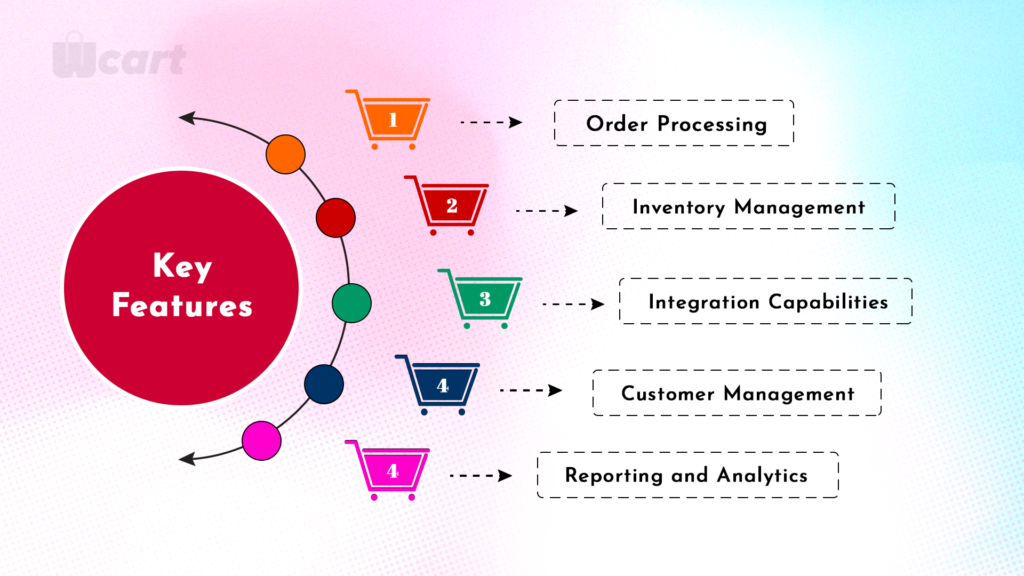
To choose the best Ecommerce Order Management Systems for your business, it is most important to consider the key features and functionalities they offer. Here are some essential features to look for:
a) Order Processing: Allows efficient handling of incoming orders, order tracking, and order status updates. It should provide real-time visibility into the order lifecycle.
b) Inventory Management: An OMS should offer features such as real-time inventory tracking, stock level alerts, and automated inventory replenishment to prevent stockouts and overselling.
c) Integration Capabilities: Seamless integration with your existing ecommerce platforms, payment gateways, and shipping carriers is crucial. Look for an OMS that offers easy integration options to streamline your operations and avoid manual data entry.
d) Customer Management: A good OMS enables businesses to manage customer information, track customer orders, and provide personalized customer support. Look for features such as customer profiles, order history, and communication tracking.
e) Reporting and Analytics: An OMS should provide comprehensive reporting and analytics features that offer insights into sales performance, order trends, and customer behavior.
Read More: Essential Ecommerce Inventory Management Techniques for Business Success
Types of Ecommerce Order Management Systems
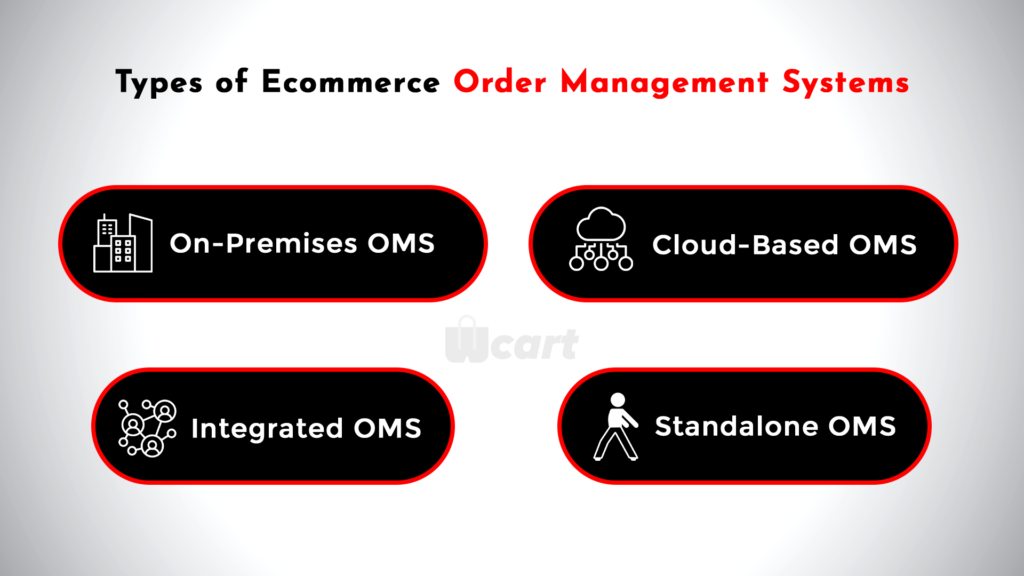
There are different types of Order Management Systems in Ecommerce available, catering to various business sizes and requirements. Here are a few common types:
a) On-Premises OMS: These systems are hosted on the business’s own servers, offering complete control and customization. Altogather, they are suitable for larger enterprises with complex order management needs.
b) Cloud-Based OMS: Cloud-based OMS solutions are hosted on remote servers, providing flexibility and scalability. They are cost-effective and ideal for small to medium-sized businesses.
c) Integrated OMS: Integrated OMS solutions are built into ecommerce platforms, providing a seamless experience. They eliminate the need for third-party integrations but may have limitations in terms of advanced functionalities.
d) Standalone OMS: Standalone OMS solutions are independent systems that can integrate with various ecommerce platforms and other software applications. They offer flexibility and customization options.
Choosing the Best Ecommerce Order Management Systems
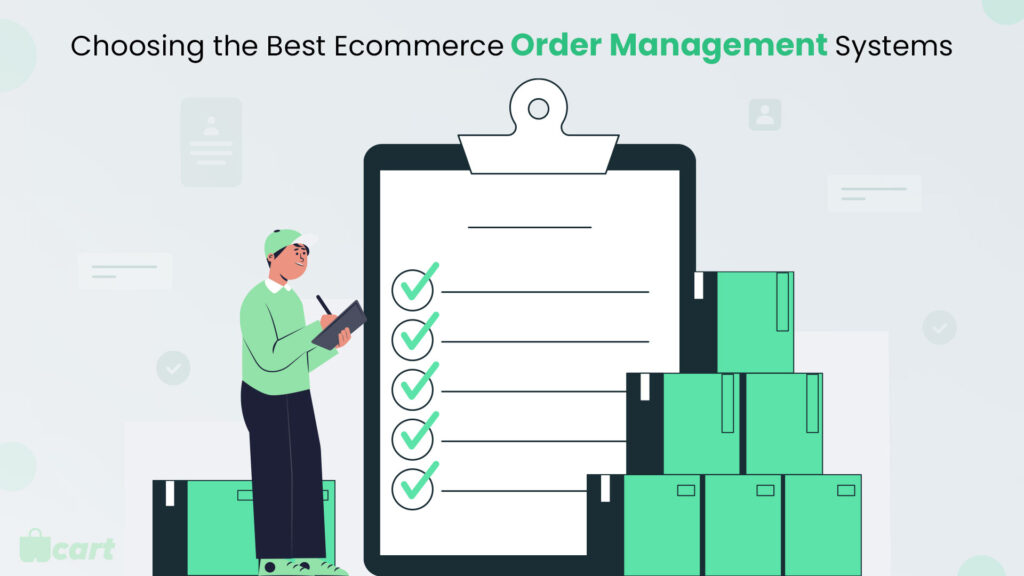
1. Evaluating Your Business Needs
When it comes to choosing the best Ecommerce Order Management Systems, it is essential to evaluate your specific business needs. By understanding your requirements, you can make an informed decision and select an OMS that aligns with your goals.
2. Identifying Specific Business Requirements and Objectives
Start by identifying your specific business requirements and objectives. Consider factors such as order volume, product diversity, and target market. Determine if you need features like multi-channel support, international shipping, or real-time inventory management. In this case, defining your requirements clearly will help you narrow down your options and find an OMS that caters to your specific needs.
3. Assessing the Size and Complexity of Your eCommerce Operations
In the meantime, size and complexity of your ecommerce operations play a significant role in selecting an appropriate OMS. If you’re a small business with a limited product range and low order volume, a simpler OMS with basic features might suffice. However, larger businesses with a wide product catalog, high order volume, and complex order workflows may require a more robust OMS with advanced capabilities.
4. Determining Integration Needs with Existing Systems and Platforms
Consider the systems and platforms you currently use for your ecommerce operations. Evaluate the integration capabilities of the OMS options you are considering. Seamless integration with your existing systems, such as your ecommerce platform, payment gateways, and accounting software, is crucial for smooth order management. Determine if the OMS can integrate with these systems or if any custom development is required.
Scale Faster with the Right Order Management System Choice!
Key Considerations in Choosing an Order Management System
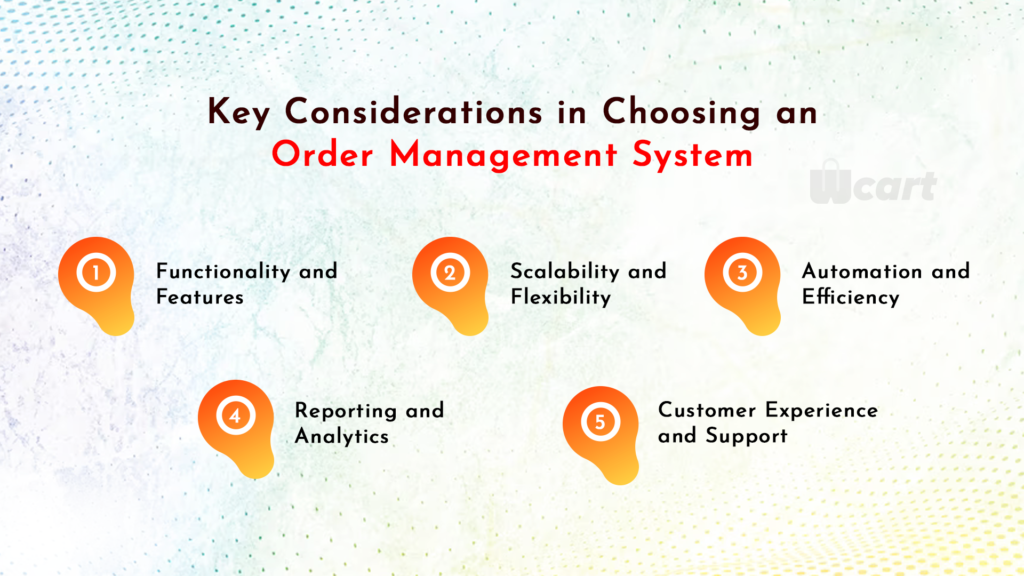
Selecting the best Ecommerce Order Management System (OMS) requires careful consideration of various factors. To make an informed decision, keep the following key considerations in mind.
1. Functionality and Features
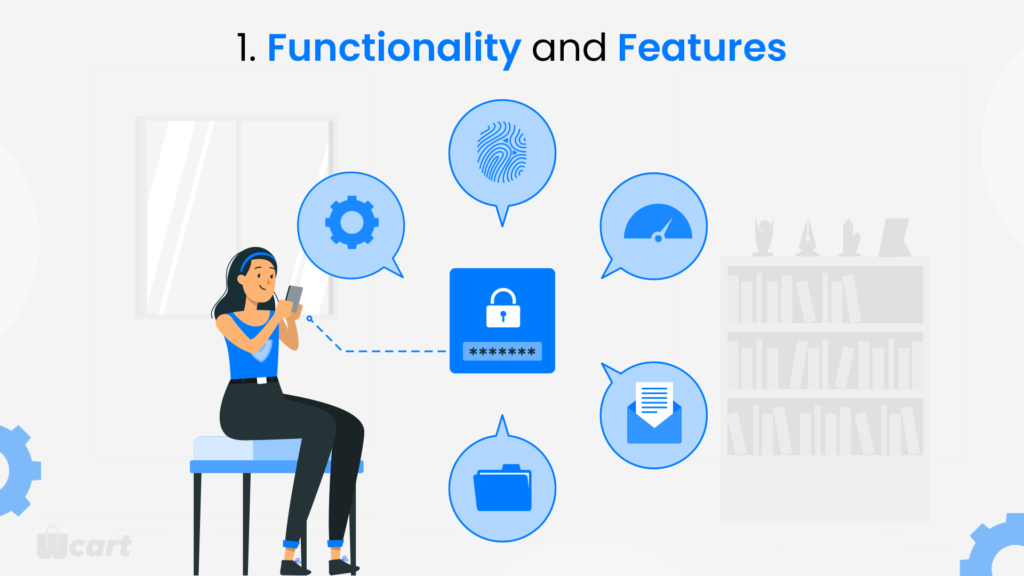
Look for features that align with your business requirements, such as order processing automation, real-time inventory updates, and integration with shipping carriers. Consider whether the OMS provides customization options to adapt to your unique business needs.
- Inventory Management Capabilities
Ensure the OMS provides robust inventory management capabilities, including real-time stock tracking, automatic inventory updates, and low-stock alerts. This ensures you can meet customer demands without overselling or encountering stockouts.
- Order Tracking and Fulfillment Options
Look for features like order status updates, shipment tracking, and the ability to split or combine orders. Hence, this allows you to provide accurate information to customers and streamline the fulfillment process.
- Customer Communication and Support Features
Consider OMS features that facilitate seamless communication and support with customers. Features like automated order confirmation emails, customizable notifications, and the ability to handle returns and exchanges efficiently can greatly enhance the customer experience.
- Reporting and Analytics Capabilities
Once in a while, these features provide valuable insights into your business performance, including order trends, sales data, and customer behavior. Access to such data allows you to make data-driven decisions, optimize operations, and identify areas for improvement.
2. Scalability and Flexibility

Look for an OMS that can accommodate your business’s growth and adapt to changing needs. Ensure the system can handle increasing order volumes without sacrificing performance or efficiency. Additionally, choose an OMS that allows for easy integration with other systems and platforms, enabling seamless expansion and integration as your business evolves.
- Ability to Handle Growing Order Volumes
Select an OMS that can effectively handle growing order volumes without compromising on order processing speed or accuracy. The system should have the capacity to handle peak periods, such as holiday seasons or promotional events, without causing delays or disruptions.
- Support for Multiple Sales Channels
Ensure the system can seamlessly integrate with your online store, marketplaces like Amazon & Ebay, and even brick-and-mortar stores if applicable. However, this integration allows for centralized order management across all channels, reducing complexity and providing a unified view of your sales operations.
- Compatibility with Future Business Expansion Plans
If you have aspirations to enter new markets, expand your product offerings, or launch additional sales channels, ensure the OMS is compatible with these expansion goals. Look for an OMS that offers scalability, flexibility, and the ability to integrate with other systems that support your expansion plans.
Read More: Top 5 E-Commerce Development Company
3. Automation and Efficiency

Look for an OMS that offers automated processes to streamline your order management. Automation reduces manual intervention, minimizing errors and saving time. Evaluate how the OMS automates key tasks such as:
- Order Routing and Allocation Automation
A robust OMS should have the capability to automatically route orders to the appropriate fulfillment center or warehouse based on predefined rules. It should allocate inventory efficiently, taking into account factors like stock availability, location, and order priority.
- Automated Notifications and Alerts
Look for an OMS that provides automated notifications and alerts at various stages of the order process. This includes order confirmation emails, shipping notifications, and delivery updates. Comparatively automated communication keeps customers informed, reduces support inquiries, and enhances customer satisfaction.
- Streamlined Processes for Order Processing and Fulfillment
Generally, the chosen OMS should offer streamlined processes to optimize these areas. Evaluate features such as batch processing, bulk order printing, and integrated shipping label generation. These functionalities expedite the picking, packing, and shipping processes, allowing for faster order fulfillment and improved operational efficiency.
4. Reporting and Analytics
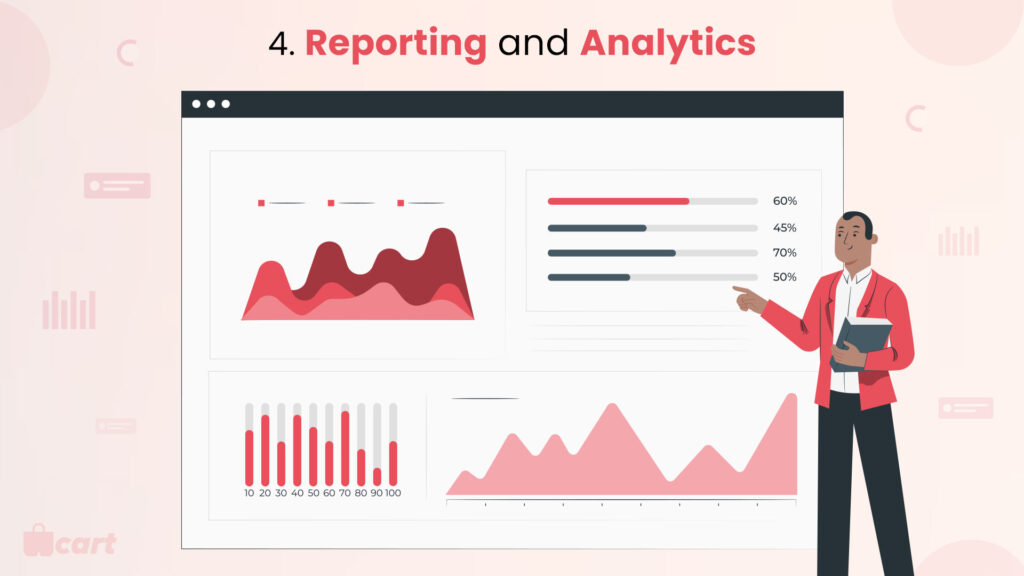
Look for an OMS that provides comprehensive reporting features to track order performance, analyze sales trends, and monitor key metrics. Meanwhile, robust reporting tools enable you to make data-driven decisions and identify areas for improvement in your order management processes.
- Reporting Capabilities for Tracking Order Performance
Look for features that provide insights into order processing times, order accuracy rates, and fulfillment efficiency. Generally, the ability to generate reports on order status, order backlog, and order cancellation rates helps you identify bottlenecks and optimize your operations for improved order fulfillment.
- Insights and Analytics to Optimize Inventory Management
Look for features that provide visibility into inventory levels, stock turnover rates, and demand forecasting. Eventually, these insights help you maintain optimal stock levels, avoid overstocking or stockouts, and make informed decisions about inventory replenishment.
- Data Visualization Tools for Informed Decision-Making
Consider an OMS that provides data visualization tools for better understanding and interpretation of your order data. Interactive charts, graphs, and dashboards enable you to visually analyze sales performance, track order trends, and identify patterns.
Read More: 12 Must-Try Tips for Increasing Ecommerce Conversion Rates
5. Customer Experience and Support

The customer experience is most important in ecommerce. Look for an OMS that prioritizes customer experience and support.
- Seamless and Intuitive Interface for Customers
A user-friendly and visually appealing interface enhances the overall shopping experience and reduces cart abandonment rates. Consider an OMS that provides a mobile-responsive design, clear product descriptions, and a smooth checkout process.
- Order Tracking and Communication Features
Likewise customers should be able to track their orders in real-time and receive automatic notifications about order status updates, shipment tracking, and delivery details. Markedly, clear and timely communication builds trust and improves customer satisfaction.
- Customer Support Options and Responsiveness
Look for features such as live chat, email support, and a comprehensive knowledge base. Additionally, consider the responsiveness of the OMS provider in addressing customer inquiries or issues. Meanwhile, prompt and reliable customer support contributes to a positive customer experience.
5 Factors to Evaluate When Choosing an Order Management System
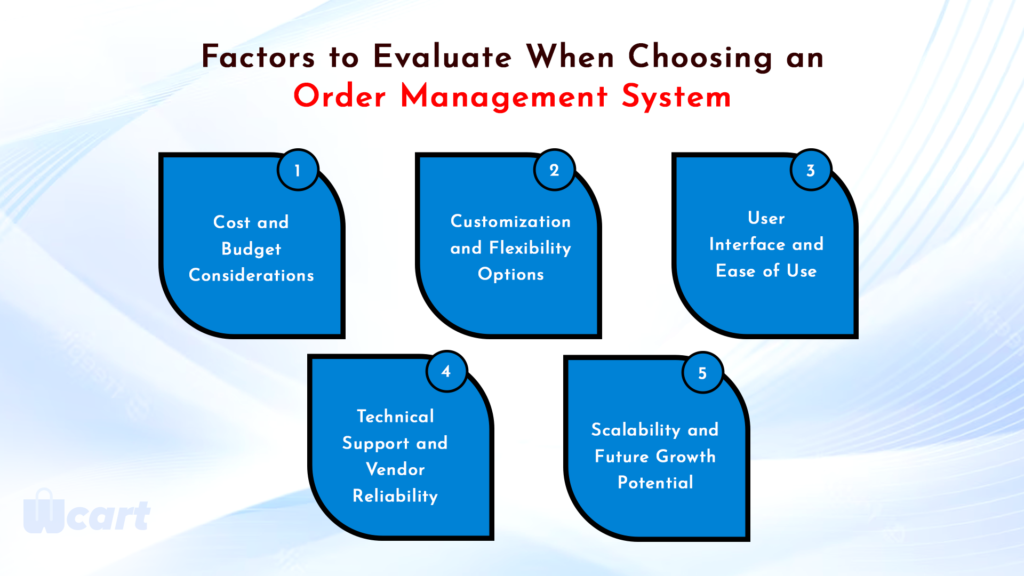
Selecting the best Ecommerce Order Management System (OMS) requires careful evaluation of various factors.
1. Cost and Budget Considerations
Evaluate the cost including any upfront fees, licensing costs, and ongoing subscription fees. Consider your budget and ensure the chosen OMS aligns with your financial capabilities while providing the necessary features and functionality.
2. Customization and Flexibility Options
The ability to tailor the system to match your specific workflows, integrations, and branding requirements can significantly enhance efficiency and improve user experience.
3. User Interface and Ease of Use
Consider an OMS that offers a well-designed and easy-to-navigate user interface. A system that requires minimal training and offers clear workflows can help minimize errors and improve productivity.
4. Technical Support and Vendor Reliability
Evaluate their responsiveness and expertise in addressing any issues or concerns that may arise during implementation or daily operations. Choose a vendor with a track record of reliability and a commitment to ongoing system updates and improvements.
5. Scalability and Future Growth Potential
Altogether, look for a system that can handle increasing order volumes, support additional sales channels, and integrate with other systems as your business expands. At last, scalability ensures that your chosen OMS can grow with your business and support your long-term goals.
Read More: 5 Must-Have E-commerce Developer Skills
Top 6 Benefits of a Good Order Management System
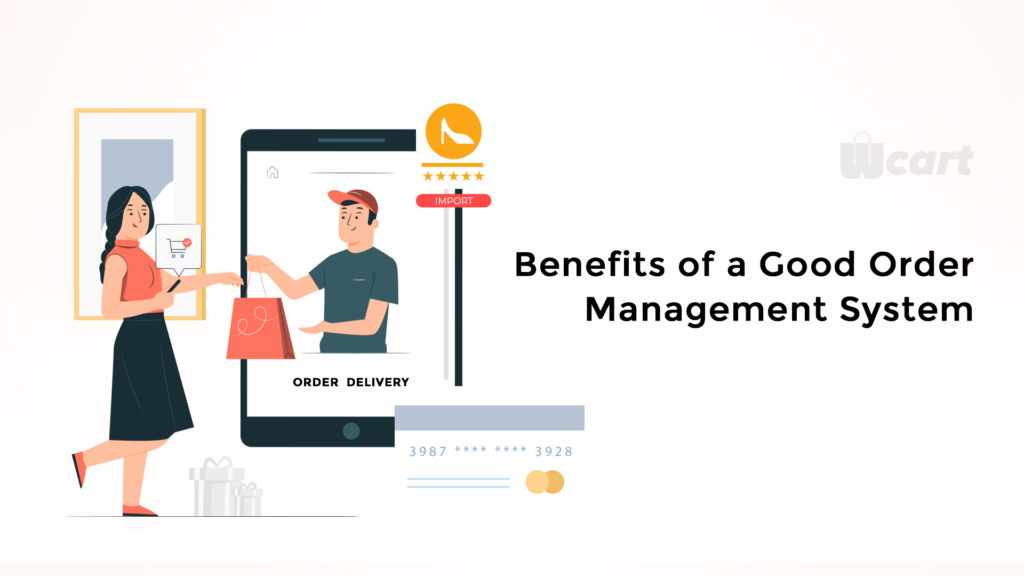
As a result, implementing a robust Ecommerce Order Management System offers several benefits for your business.
1. Streamlined Order Processing – A good OMS streamlines the order processing workflow, automating tasks such as order entry, order routing, and payment processing. This reduces manual effort, minimizes errors, and accelerates order fulfillment.
2. Improved Inventory Management – At this time with an OMS, you gain better visibility and control over your inventory. Real-time inventory tracking, automated stock updates, and alerts for low stock levels help prevent stockouts and overstocking, optimizing inventory management.
3. Enhanced Customer Experience – An efficient OMS improves the overall customer experience. Correspondingly, Customers receive accurate order information, timely notifications, and reliable delivery updates, leading to increased satisfaction and repeat business.
4. Increased Efficiency and Productivity – By automating order management processes, an OMS improves operational efficiency and productivity. Staff can focus on value-added tasks rather than manual order processing, leading to improved productivity and resource allocation.
5. Better Data Analysis and Decision Making – At the same time, a good OMS provides comprehensive data and analytics capabilities. Access to order data, sales reports, and customer insights enables data-driven decision making, identifying trends, and optimizing business strategies.
6. Increased Revenue – Correspondingly with streamlined processes, improved inventory management, enhanced customer experience, and data-driven decision making, an OMS contributes to increased revenue generation. Particularly, efficient order management leads to more sales, higher customer satisfaction, and improved profitability.
8 Steps on How to Implement, Integrate, and Optimize an Order Management System
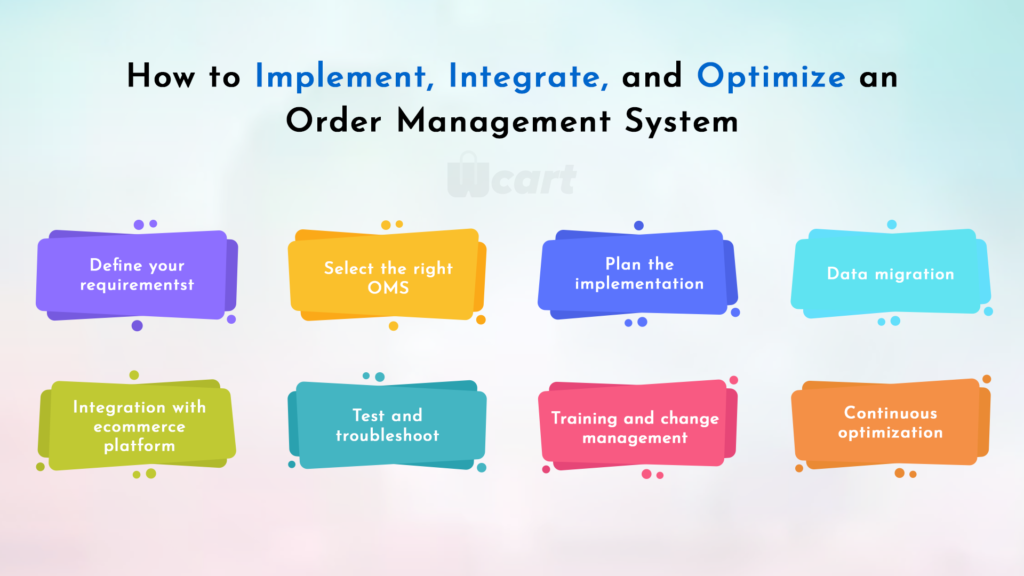
Implementing an Ecommerce Order Management System requires careful planning and execution. Follow these steps in the same way for a successful implementation:
- Define your requirements: Clearly outline your business needs, objectives, and desired outcomes from the OMS implementation. Identify specific functionalities and integrations required.
- Select the right OMS: Choose an OMS that aligns with your requirements and offers the necessary features and scalability.
- Plan the implementation: Develop a detailed implementation plan, including timelines, resource allocation, and key milestones. Ensure adequate training for the staff who will be using the system.
- Data migration: Carefully migrate existing data from legacy systems to the new OMS. Verify data accuracy and integrity during the process.
- Integration with ecommerce platform: Follow best practices to integrate the OMS with your ecommerce platform. Ensure seamless communication between the systems for order synchronization, inventory updates, and customer data.
- Test and troubleshoot: Conduct thorough testing of the OMS to identify and resolve any issues or discrepancies. Test order processing, inventory management, and communication workflows.
- Training and change management: Provide comprehensive training to the staff who will be using the OMS. Prepare them for the transition and communicate the benefits of the new system.
- Continuous optimization: By the time, regularly evaluate the OMS performance, gather feedback from users, and make necessary adjustments. Optimize the system based on data insights and user experiences.
Read More: Maximizing Profits with the Latest Ecommerce Trends
6 Best Practices for Integration with Ecommerce Platform and Other Systems
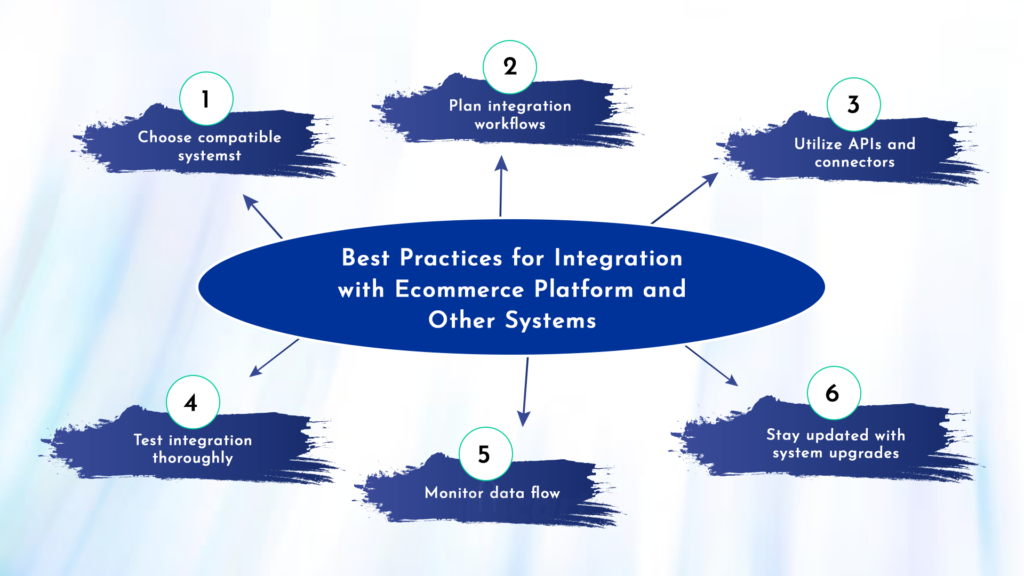
When integrating an OMS with your ecommerce platform and other systems, follow these best practices:
- Choose compatible systems: Ensure that the OMS and your ecommerce platform are compatible in terms of data formats, APIs, and communication protocols. Select systems that support seamless integration.
- Plan integration workflows: Define clear integration workflows to synchronize data between the OMS and other systems. Map out the data flow for order processing, inventory updates, and customer information.
- Utilize APIs and connectors: Leverage APIs (Application Programming Interfaces) and connectors provided by the OMS and your ecommerce platform to facilitate integration. However, this allows the systems to exchange date and communicate between them.
- Test integration thoroughly: Conduct rigorous testing of the integration to ensure accurate data transfer and synchronization. Test scenarios such as order placement, inventory updates, and data consistency.
- Monitor data flow: Implement monitoring tools to track data flow between systems. Regularly monitor and troubleshoot any integration issues that may arise.
- Stay updated with system upgrades: Keep your OMS, ecommerce platform, and other integrated systems up to date with the latest versions. This ensures compatibility and access to new features and improvements.
4 Common Challenges and How to Overcome Them
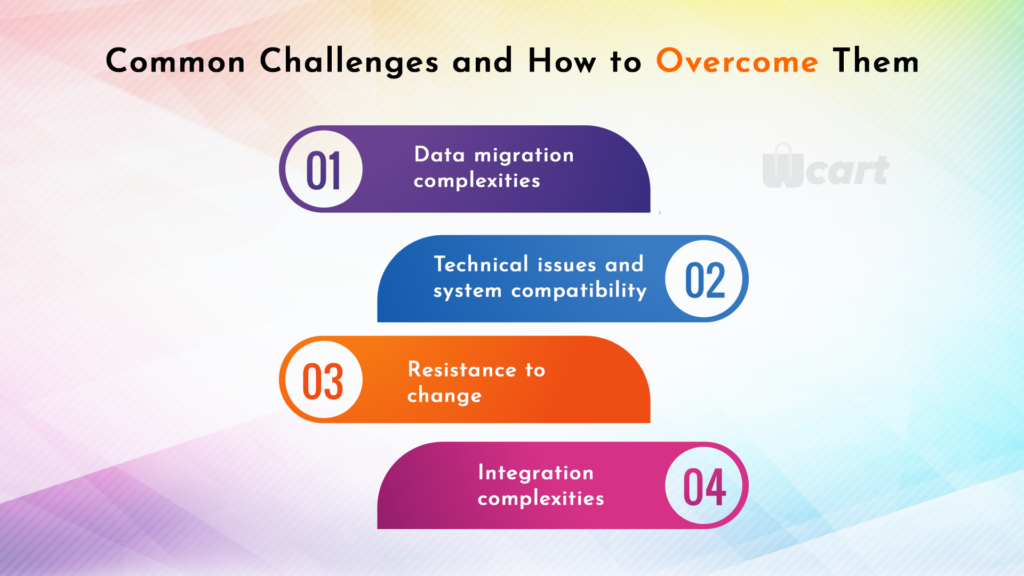
Implementing and integrating an OMS may present challenges. Here are some unquestionably common challenges and strategies to overcome them:
- Data migration complexities: Ensure thorough data mapping and validation during the migration process. Conduct test migrations and perform data quality checks to identify and rectify any discrepancies.
- Resistance to change: Address resistance to change through effective change management strategies. Communicate the benefits of the new system, provide training and support, and involve key stakeholders in the decision-making process.
- Technical issues and system compatibility: Collaborate closely with the OMS vendor and other system providers to address any technical issues. Regularly update software versions and maintain open lines of communication for prompt issue resolution.
- Integration complexities: Engage experienced integration specialists or seek support from the OMS vendor to navigate complex integration requirements. Follow best practices and conduct thorough testing to ensure seamless integration.
Read More: Unlocking E-commerce Success With Top 9 Business Models
Conclusion
After helping 500+ ecommerce businesses over the past 8 years, I can tell you this – the right ecommerce order management system literally changes everything. I’ve seen small stores grow into million-dollar businesses just by fixing their order chaos.
Here’s my honest advice: don’t get stuck analyzing forever. Pick an order management system that solves your biggest headache today. Whether it’s inventory mix-ups or angry customers asking about their orders.
The best ecommerce order management system isn’t the most expensive one – it’s the one that actually fits your business and budget. I’ve watched too many owners pick fancy ecommerce OMS solutions they never fully use.
Start simple, then scale up as you grow.
Ready to finally get your orders under control?
Contact the Wcart expert team today. We’ve been in the trenches with businesses just like yours. Let’s find your perfect OMS ecommerce solution – no fluff, just results that actually work.
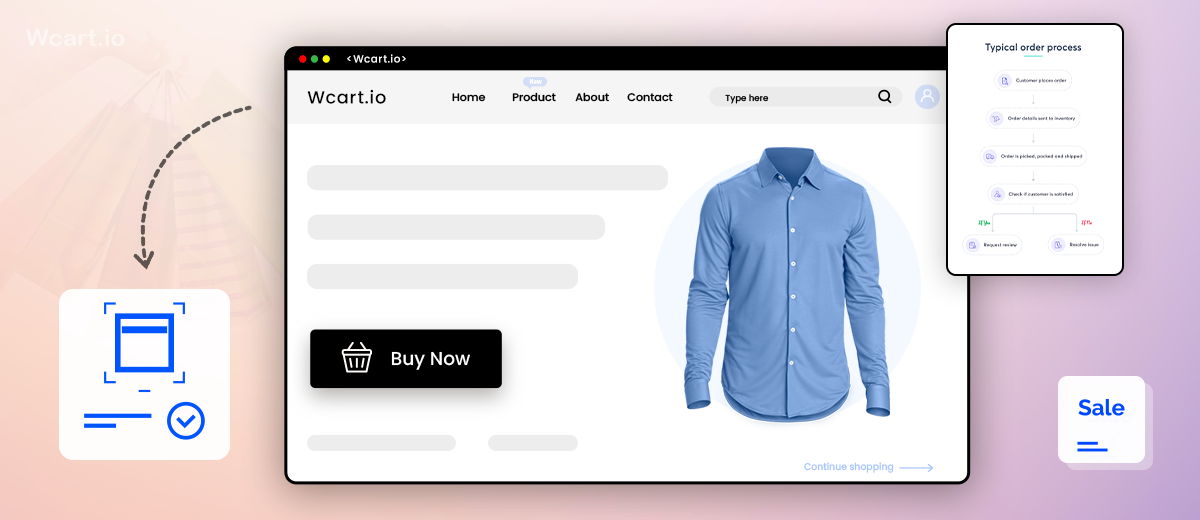



Leave a Reply